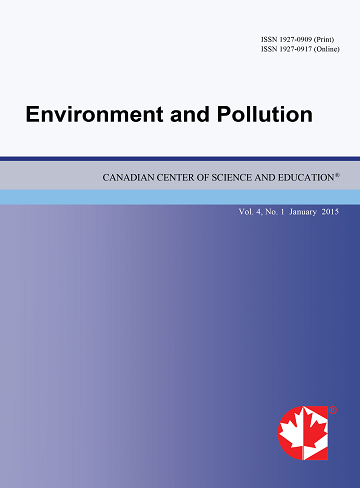Investigating Solid Waste Management in the Bolgatanga Municipality of the Upper East Region, Ghana
- Steve Ampofo
- Evans Kumi
- Boateng Ampadu
Abstract
Management of domestic solid waste is one of the challenges facing many metropolitan municipal and district Assemblies in Ghana because uncollected and improperly disposed waste results in the clogging of most public areas, streets, and gutters and has a grave implications on health. In the Bolgatanga municipality, as a result of increasing urban population, a high consumption and disposal lifestyle that has no need for reuse, negative attitude by individuals and households in the handling of waste and the inadequate financial and logistical requirements on the part of the local authorities to combat this menace has had a negative impact on waste management in the municipality. This research conducts a social survey in five (5) major settlements in the municipality namely; Bolgatanga town, Zuarungu, Yikene, Sumburungu and Tindonsobligo to ascertain attitudes in waste management, perceptions on the value and reuse of waste and the management of waste at the household and local levels. Also we determined the rates and trend in increase of population and waste levels for the municipality at a four (4) year interval for the years; 1993, 1997, 2001, 2005, and 2009 and measure the strength of association using Pearson’s Product Moment Correlation Coefficient. The study revealed that the most predominant waste disposal is the communal disposal at sites normally not approved in the peri-urban communities. This is followed by the door-to-door services which was prevalent in the urban residential areas. Despite the dominant nature of communal skips and door-to-door services mostly in the Bolgatanga community, inhabitants still practice improper disposal from disposal in nearby bush to open dumps due to lack of enforcement of regulatory policies and programmes irrespective of income levels. These problems are compounded by inadequate proper storage receptacles, unavailability of community storage receptacles and the long distance of travel for disposal of household waste which discourages dumping at common and approved sites. For the period under consideration (1993-2009), the population for the municipality increased from 188,690 to 295,333 representing an increase of 36%, while waste generated increased from 46,015 to 101, 823 tons, an increase by 55% which results in an average per capita waste generation (kg/person/daily) of 0.70 kilogrammes for the period under consideration. The Pearson’s Product Moment Correlation Coefficient (r) between population and waste generated in the municipality revealed a high and a strong association of 0.88 which confirms the distribution of communal skips by the municipal assembly with concentration in high population urban zones within the Bolgatanga town.
- Full Text:
 PDF
PDF
- DOI:10.5539/ep.v4n3p27
Journal Metrics
h-index (2017): 10
i10-index (2017): 11
h5-index (2017): 9
h5-median (2017): 15
Index
- Academic Journals Database
- Berkeley Library
- CAB Abstracts
- CAS (American Chemical Society)
- CNKI Scholar
- COPAC
- CrossRef
- DTU Library
- Elektronische Zeitschriftenbibliothek (EZB)
- EuroPub Database
- Excellence in Research for Australia (ERA)
- Genamics JournalSeek
- Google Scholar
- Harvard Library
- Infotrieve
- Jisc Library Hub Discover
- JournalGuide
- JournalTOCs
- LOCKSS
- Max Planck Institutes
- Mir@bel
- PKP Open Archives Harvester
- Pollution Abstracts
- Publons
- Pubmed journal list
- ROAD
- Scilit
- SHERPA/RoMEO
- Standard Periodical Directory
- Stanford Libraries
- UCR Library
- Ulrich's
- UniCat
- Universe Digital Library
- UoS Library
- WorldCat
- Zeitschriften Daten Bank (ZDB)
Contact
- Albert JohnEditorial Assistant
- ep@ccsenet.org
